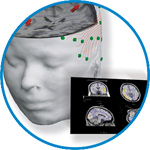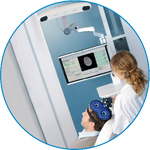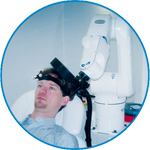- Home
- About ANT
-
Products

asa
asa is a highly flexible EEG/ERP and MEG analysis package with a variety of source reconstruction, signal analysis and MRI processing features.
.jpg)
eego mylab
The new frontier in multimodal brain research. With up to 16 kHz sampling rate, 256 EEG channels and unique software features, eego mylab gives you an unprecedented in-depth understanding of the human brain.

eego sports
eego sports offers complete freedom to collect high-density EEG data, bipolar EMG signals, and a variety of physiological sensor data, wherever and whenever required, with publish quality data in less than 15 minutes!

waveguard net
The waveguard net sets a new standard for research applications requiring high-density EEG data acquisition with quick preparation time, high flexibility, and subject comfort.

visor2
Our new and upgraded visor2 solutions integrate all the latest technologies for navigated rTMS, dual-coil navigation support, EEG-TMS recordings and pre-surgical evaluation for the highest quality in research and clinical procedures.

powerMAG ANT
The PowerMAG ANT 100 rTMS stimulator is designed for the specific needs of high-end TMS applications. Powerful high-frequency TMS as well as high precise single pulse and repetitive pulse protocols are combined in one single device.

xensor
xensor offers the solution for digitization of 3D electrode positions. xensor takes care of the whole procedure; it records, visualizes and stores positions acquired with a dedicated digitizer.

waveguard original
waveguard original is the cap solution for EEG measurements compatible with fMRI, MEG and TMS system. Use of active shielding guarantees performance in even the most demanding environments.

waveguard connect
waveguard connect EEG caps are a perfect match for hospitals and institutes aiming at reliable EEG, maximum uptime and great patient comfort! For optimal signal quality, the electrodes are made of pure, solid tin.

waveguard touch
waveguard touch is a dry electrode EEG cap. The unique Ag/AgCl coated soft polymer electrodes provide stable, research-grade EEG signals while maintaining subject comfort. The combination of these innovative dry electrodes and the industry-leading waveguard cap makes waveguard touch the best solution for dry EEG.

smartmove
smartmove allows planning of a complete TMS session ahead by defining stimulation sites based on anatomical MRI information and functional information like fMRI, PET or EEG/MEG.
Stay - References
- Support
- Events
- News
- Contact Us
You are here
Abnormal functional connectivity within resting-state networks is related to rTMS-based therapy effects of treatment resistant depression: A pilot study
Abnormal functional connectivity within resting-state networks is related to rTMS-based therapy effects of treatment resistant depression: A pilot study
Background
Treatment resistant depression (TRD) remains a clinical challenge, and finding biomarkers that predict treatment response are a long sought goal to precisely indicate treatments. This pilot study aims to characterize brain dysfunction in TRD patients who underwent rTMS to define neuroimaging biomarkers that discriminate non-responders (NR) from responders (R).
Methods
20 TRD patients who underwent a course of rTMS to the left DLPFC were categorized into R and NR groups based on a >50% reduction in HRSD scores. Utilizing resting-state fMRI and ICA techniques, this study compared baseline RSNs of R vs. NR as well as TRD vs. healthy volunteer group. Regression analysis was conducted to link regions with clinical improvements. ROC analysis was further conducted to confirm the utility of the identified regions in classifying the patients.
Results
Prior to treatment, non-responders displayed hyper-connectivity in ACC/VMPFC, PCC/pC, dACC and insula within RSNs that have been associated with MDD pathology. Regression results showed that regions associated with clinical improvements overlapped largely with regions that showed aberrant connectivity. ACC/VMPFC, dACC and left insula, which are hub regions of DMN and SN, exhibited excellent performance (highest sensitivity=100% and highest specificity=82%) in discriminating the response status of the patients.
Limitations
Relatively small sample size.
Conclusions
Our findings provide insight into fMRI predictive measures of treatment response to rTMS treatment, and demonstrate the potential of RSNs-based biomarkers in predicting response to rTMS treatment. Future studies are needed to validate the application of these measures to inform individual treatment indications.
Read more: http://www.jad-journal.com/article/S0165-0327(16)32013-4/fulltext?cc=y=

 Read more
Read more.jpg)




